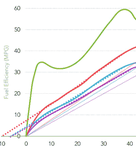Geraldine
Full Member
- Messages
- 334
Sanity at last to this thread! LolOm my Hymer S700 I had 240w of Solar and 3 x 110Ah Batteries. In Spain from just before Christmas to mid February I had to look as a way of topping up. We had lights and TV everything else was on gas.. I had B2B and a Gasparini 12v 20 amp generator, but found it easier to find a camper stop with EHU for a night one night per week This offered the chance to top up drinking water, get rid of waste and visit the shops. With the B2B we could charge where we were if needed, the same went for the generator, However we chose our stops for the solitude and quiet so we were not inclined to spoil this with the engines running. We were fine on solar and moving about for the rest of the year where ever we were.

![IMG_0192[1].JPG IMG_0192[1].JPG](https://motorhomer.com/data/attachments/22/22404-c06209587ae4e10384aec74c9032d13c.jpg)
